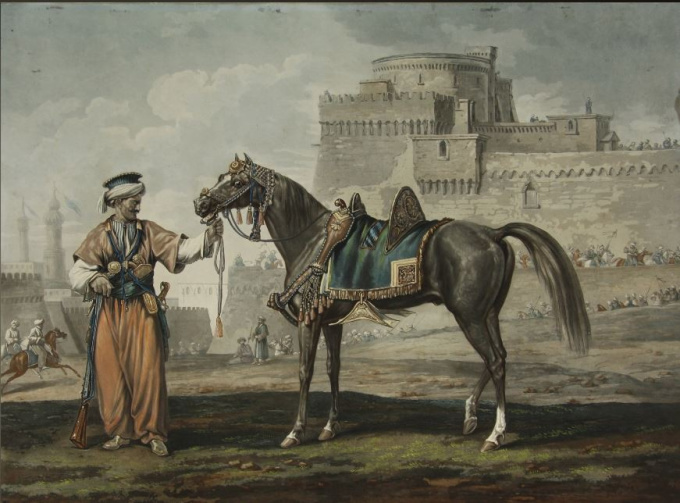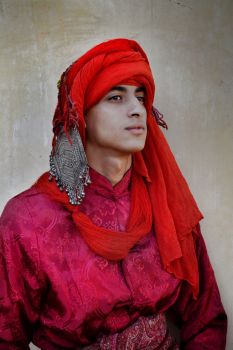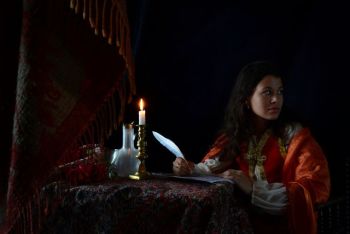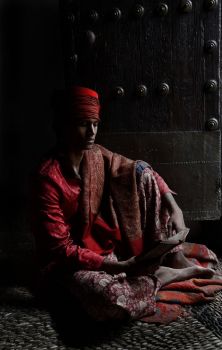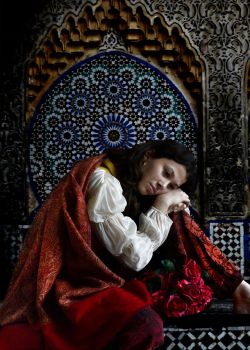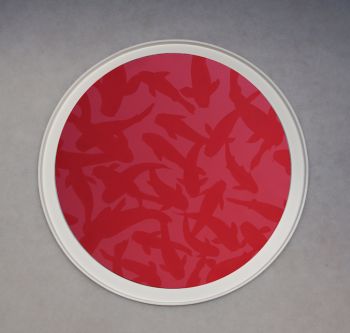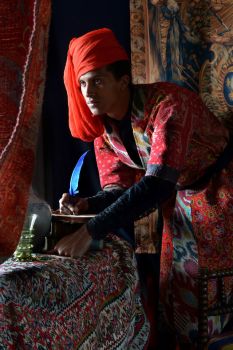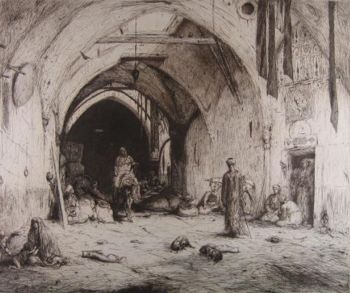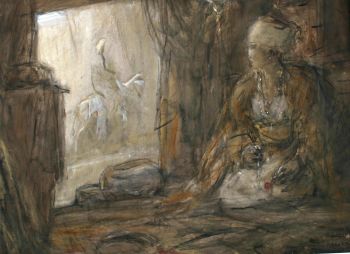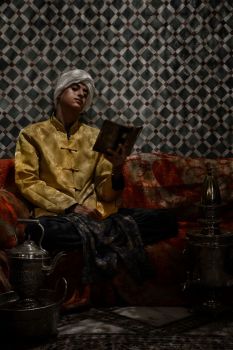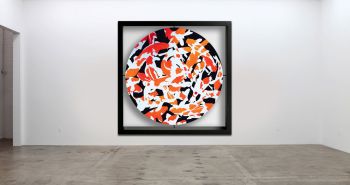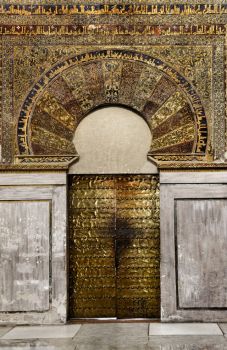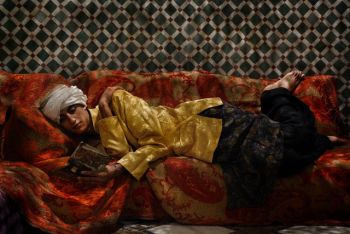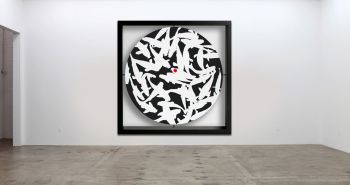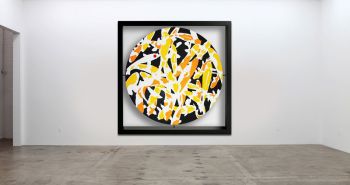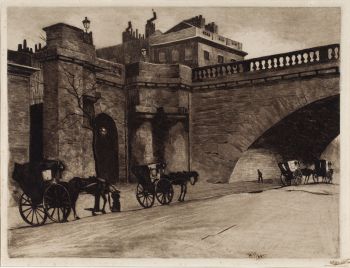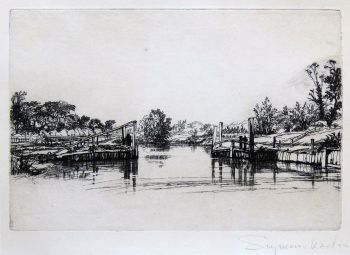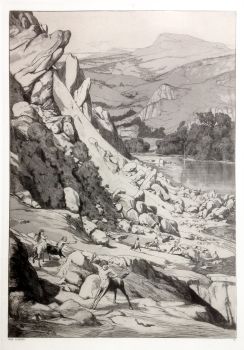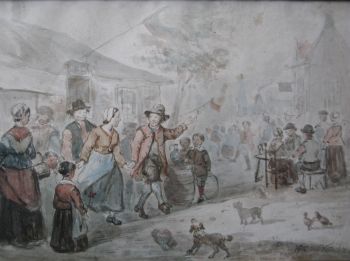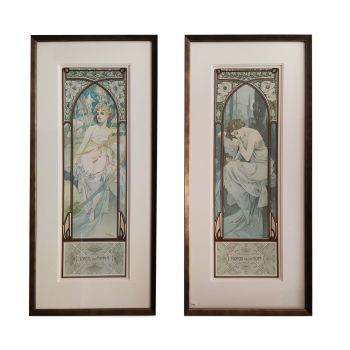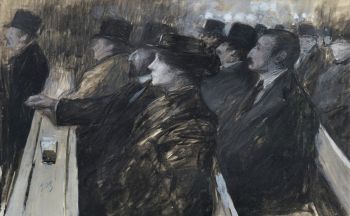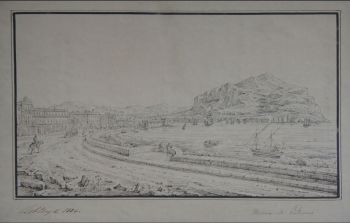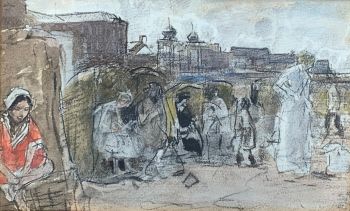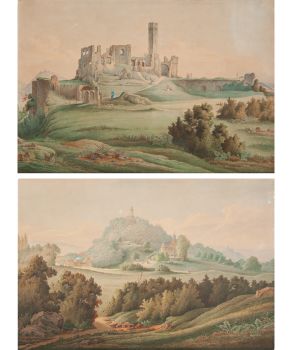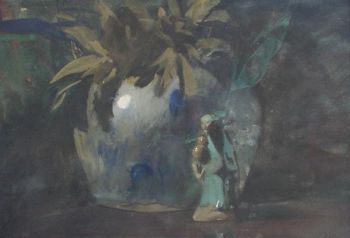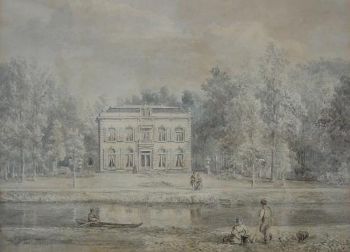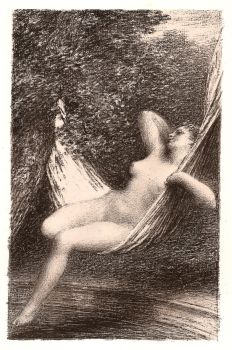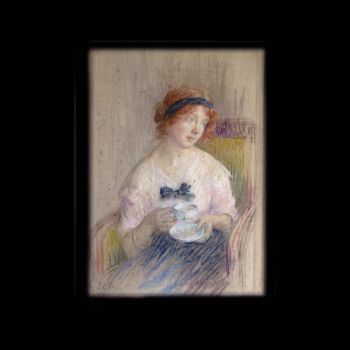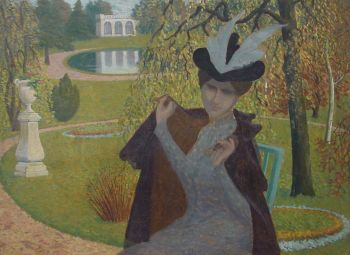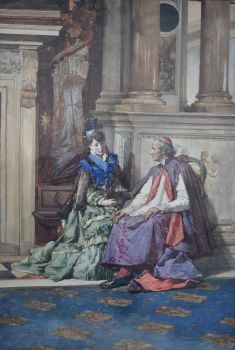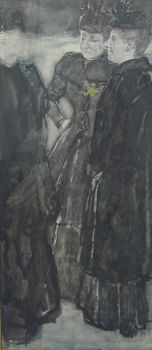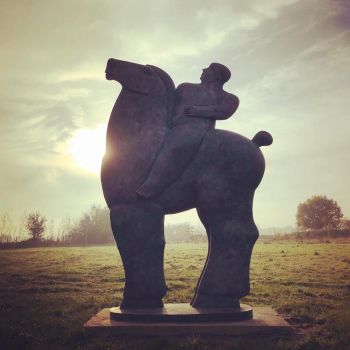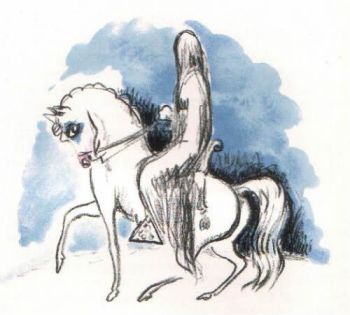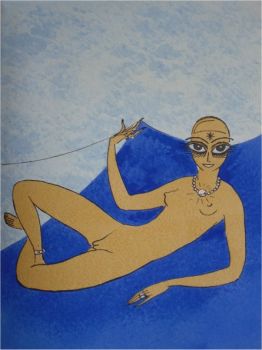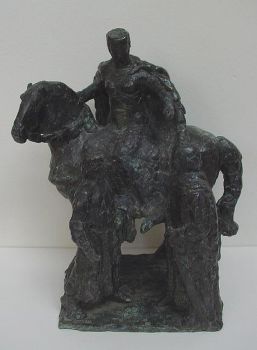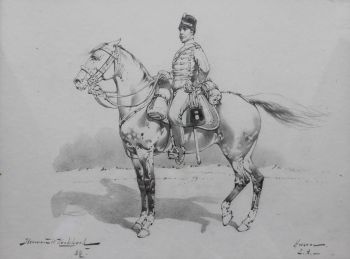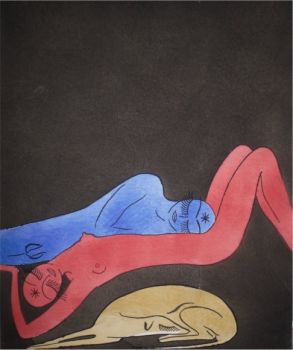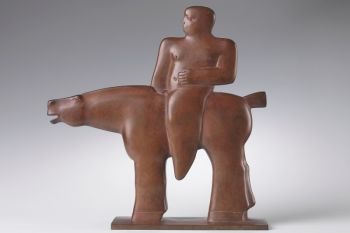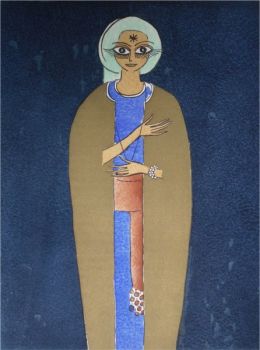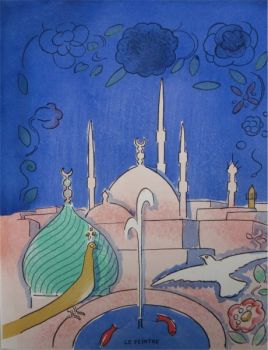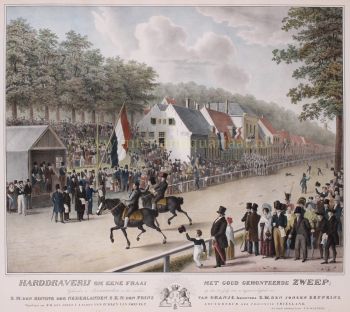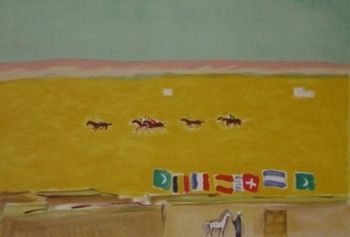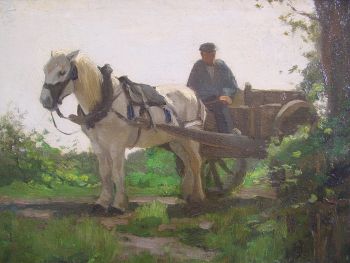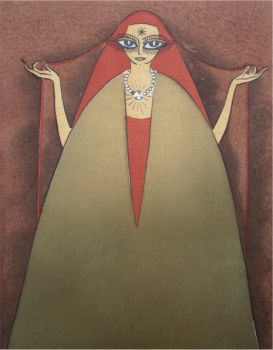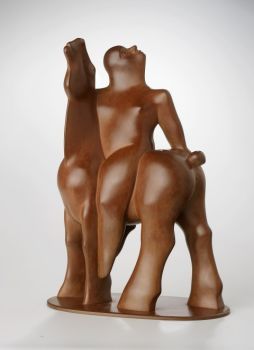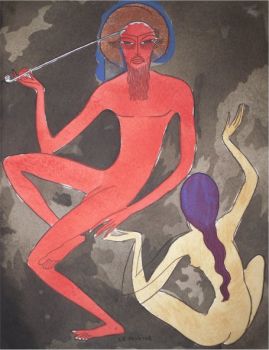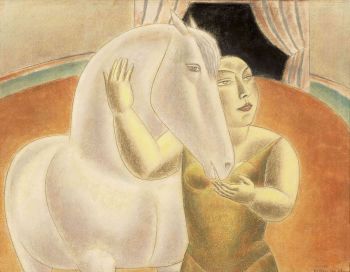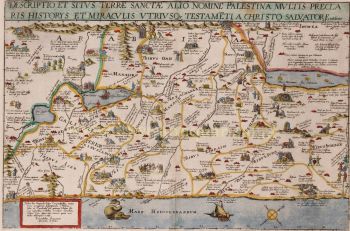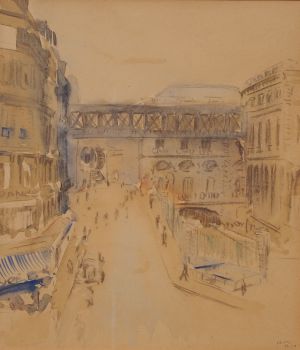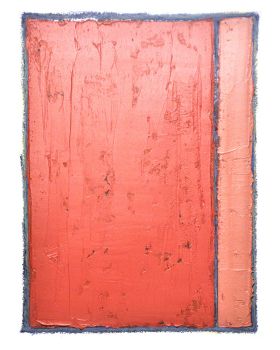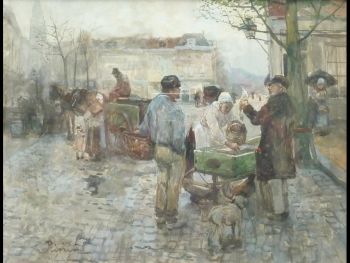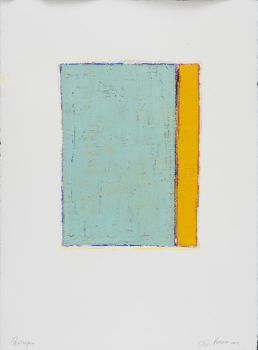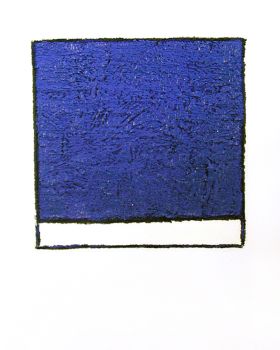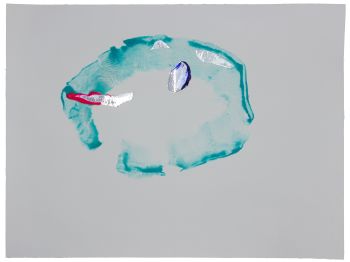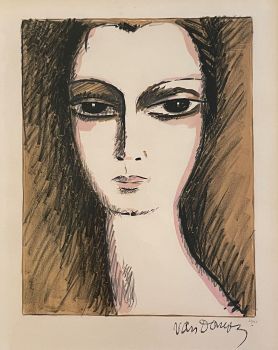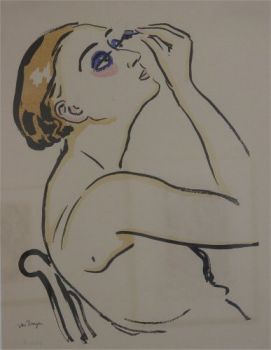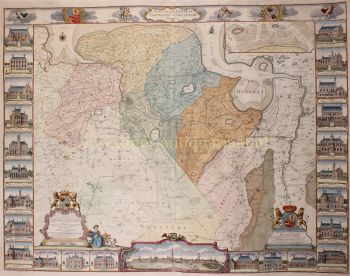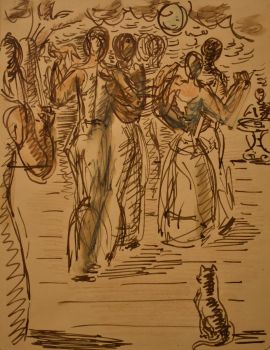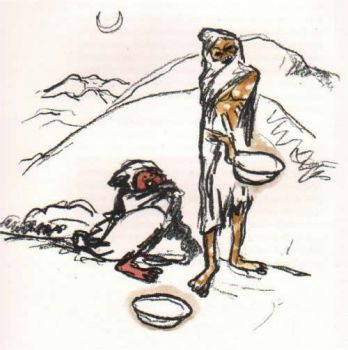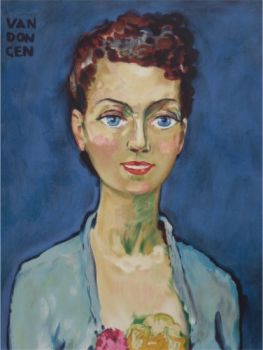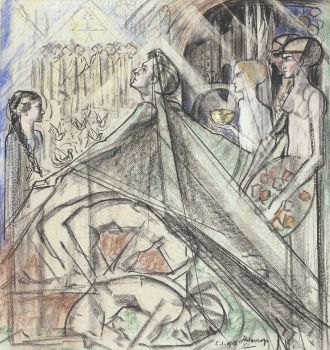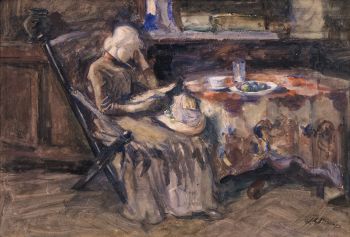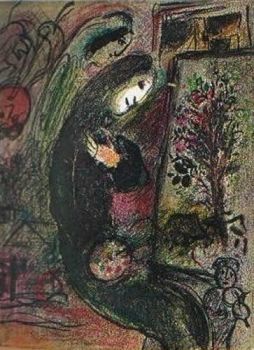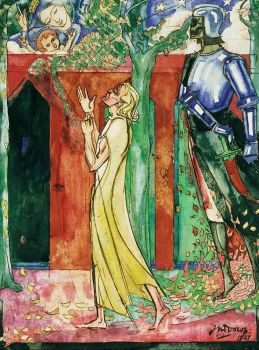'A Mameluk Leading His Horse' and 'Fight between a hussar and Mameluk'.(2x) 1820
Carle Vernet
InchiostroCartaAcquerello
73 ⨯ 94 cm
Attualmente non disponibile tramite Gallerease
- A proposito di opere d'arteCarle Vernet: 'A Mameluk Leading His Horse' and 'Fight between a hussar and Mameluk'.
Two aquatint etchings in color, enhanced with watercolor. Engraved by Philibert-Louis Debucourt (1755-1832) after paintings by Carle Vernet.
Printed by Daude and published by Charles Bance & Aumont in 1820.
The aquatint 'Combat' with the year 1811 in the plate for the year in which the original painting was made.
In 19th century frames with title description in French.
One aquatint with no margins, the other with folded margins.
Antoine Charles Horace (Carle) Vernet was a French painter, the youngest child of Claude Joseph Vernet, and the father of Horace Vernet. Born in Bordeaux, Vernet was a pupil of Nicolas-Bernard Lépicié. After being awarded the Prix de Rome in 1782, the painter spent some time in Rome. Vernet joined the Paris painting academy in the course of the same year as the outbreak of the French Revolution. 1799 was a crucial turning point in Vernet’s oeuvre: he exhibited drawings from Napoleon’s Italian campaign in a new and original style, which has prompted scholars to argue that Vernet’s contribution was essential in introducing strategy and verisimilitude in contemporary battle painting. This was in large part due to his exceptional ability to paint horses. Napoleon awarded him the Legion of Honour. Louis XVIII awarded him the Order of Saint Michael.
These aquatints depict Mameluk soldiers, renowned for their ferocity and superb abilities as cavalrymen. A Cairene citadel can be seen in the background. The Mameluks began as a slave warrior caste in the 9th century, created by Muslim rulers. They later became landowners and rulers in their own right, primarily in Egypt. By the Napoleonic era, their influence was on the decline, however, they were still a fearsome fighting force. Napoleon defeated the Mameluk army when he invaded Egypt in 1798, but was greatly impressed with their courage. He created a special Mameluk corps in the French army, and he, himself, had a Mameluk body guard named Roustan. In one of these aquatints, the Mameluk is armed with a scimitar, rifle and brace of pistols, and wears the uniform of the Napoleonic squadron before 1804: the green cahouk (hat) wrapped with a white turban, red sarousal (trousers), loose white shirt and waistcoat. - A proposito di opere artistaNato a Bordeaux, Vernet fu allievo di suo padre e di Nicolas-Bernard Lépicié. Stranamente, dopo aver vinto il Gran Premio (1782), il padre dovette richiamarlo da Roma in Francia per impedirgli di entrare in monastero. Nel suo Trionfo di Emilio Paolo, ruppe con la tradizione e disegnò il cavallo con le forme che aveva appreso dalla natura nelle stalle e nei maneggi. Anche i suoi pezzi di caccia, le razze, i paesaggi e il lavoro di litografo erano molto popolari. La sorella di Carle fu giustiziata con la ghigliottina durante la Rivoluzione. Dopo questo, ha rinunciato all'arte. Il forno da gesso a Montmartre Quando riprese a produrre sotto il Direttorio francese (1795–1799), il suo stile era cambiato radicalmente. Ha iniziato a disegnare nei minimi dettagli battaglie e campagne per glorificare Napoleone. I suoi disegni della campagna italiana di Napoleone ottennero consensi così come la Battaglia di Marengo, e per il suo Mattino di Austerlitz Napoleone gli conferì la Legion d'Onore. Luigi XVIII di Francia gli conferisce l'Ordine di San Michele. In seguito eccelleva nelle scene di caccia e nelle raffigurazioni di cavalli. Oltre ad essere un pittore e litografo, Carle Vernet era un appassionato cavaliere. Pochi giorni prima della sua morte all'età di settantotto anni, è stato visto correre come se fosse un giovanotto vivace. Morì a Parigi.
Artwork details
Categoria
Soggetto
Stile
Materiale e Tecnica
Colore
Related artworks
- 1 - 4 / 21
Willem Witsen
Waiting carriages in front of Waterloo Bridge1850 - 1900
Prezzo su richiestaKunsthandel Pygmalion
JOHAN ANTONIE DE JONGE
A day on the beach of Scheveningen1885 - 1910
Prezzo su richiestaAdelwein Kunst
Jan Voerman sr
Still Life with flowers in a Chinese figurine1850 - 1900
Prezzo su richiestaKunsthandel Pygmalion
Albert Clouard
Élégante à la cape (Elegant lady with a cloak)1866 - 1900
Prezzo su richiestaKunsthandel Pygmalion
1 - 4 / 24Willem Witsen
Waiting carriages in front of Waterloo Bridge1850 - 1900
Prezzo su richiestaKunsthandel Pygmalion
H.J. van der Weele
Horse and carriage in landscape1850 - 1900
Prezzo su richiestaKunsthandel Pygmalion
1 - 4 / 24Bob Buys
Paris, Gare de L'Est, Passerelle de la Rue d'Alsace1940 - 1950
Prezzo su richiestaAdelwein Kunst
Rene Rietmeyer
TOKYO - Kudan House - January 2021 #012021
Prezzo su richiestaEuropean Cultural Centre Collection
Rene Rietmeyer
"Portrait of Lawrence Weiner, May 1999"1999
Prezzo su richiestaEuropean Cultural Centre Collection
1 - 4 / 24

